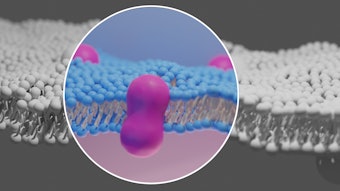
The GLP-1 medications such as semaglutide, Ozempic, Wegovy, tirzepatide, Mounjaro and Zepbound are likely to be the most impactful medications to become available in the United States in my career! The semaglutide and tirzepatide medications have been revolutionary in the battle against obesity. Initially developed as treatments for diabetes, these medications have shown profound effects on weight loss. Patients have experienced weight loss amounting to between 15% and 20% of their body weight within a year, leading to a global impact.
Benefits & Impact of Semaglutide Medications
Throughout 2023, speculation about who is taking these medications grew. Any significant weight loss was assumed to be linked to semaglutide, Ozempic, Mounjaro or tirzepatide. Several celebrities, including Oprah, publicly stated that they utilized semaglutide-type medications for their weight loss journey. The fact that many people have openly discussed using these medications to make lifestyle and health changes has been invaluable in normalizing the treatment of obesity. Medical practices, celebrities and public figures have embraced these medications with considerable success, transforming lives and improving healthcare overall in America.
Multiple studies have demonstrated the enhanced medical benefits of these medications beyond just weight loss. They have shown improvements in reducing coronary artery disease risk, as indicated by several studies in 2023. The semaglutide and tirzepatide medications have proven beneficial for weight loss and overall health, contributing to the reduction of heart disease risks.
In addition, there has been a noticeable shift within the healthcare landscape, particularly in how we view obesity. In the past, it was viewed as a lack of willpower or “laziness,” and this has shifted to the realization that it is a chronic condition. This view of obesity being a chronic condition was supported by the FDA's approval of Zepbound (tirzepatide) for chronic weight management. This shows that the FDA sees obesity as an ongoing process, not an isolated event. The change in how we view obesity in the sense of medical management will open the doors for further treatment of patients struggling with weight issues.
The Weight Loss Revolution in Aesthetics
In the realm of aesthetics, these medications are poised to create a lasting ripple effect for years to come. The phenomenon of Ozempic face and body will continue to grow, as I anticipate skin laxity and the need for target volume replacement to be the number one patient concern over the next several years. In our current office, we currently see about 2,000 weight loss patients per month. We anticipate that this number will grow exponentially as these medications normalize and become more widely available. Many aesthetic and plastic surgery practices have already integrated these medications into their practices. However, whether or not a practice offers these medications, they are bound to become a cornerstone in the aesthetic world, resonating with patients and playing a meaningful role in their weight loss journeys, which will be a key element in aesthetics going forward.
Supporting Patients Throughout The Weight Loss Journey
As patients experience the visual effects of weight loss, It is crucial for aesthetic providers to be at the forefront, designing treatment methods that support patients throughout their weight loss journey, ensuring they look as good as they feel. This involves developing treatment protocols to address subsequent skin laxity, particularly as the majority of these patients are young and healthy, with mild to moderate laxity, making them ideal candidates for non-invasive skin treatments.
The aesthetic world is going to need to evolve rapidly to meet the needs of this unique patient base. The demand for non-invasive and minimally invasive treatments is going to grow exponentially. We, as aesthetic leaders, need to develop treatment plans that specifically treat the needs of this unique patient group. Practices that can help patients on their weight loss journey look as good as they feel will absolutely thrive in the world of the “Weight Loss Revolution.”
This marks an exhilarating time in the aesthetic field and healthcare in general. The development of GLP-1 medications is one of the most significant medical breakthroughs in recent memory. It will be fascinating to witness how these medications evolve and benefit patients in the long term, setting the stage for a ripple effect that will likely shape the aesthetic landscape for decades to come!












